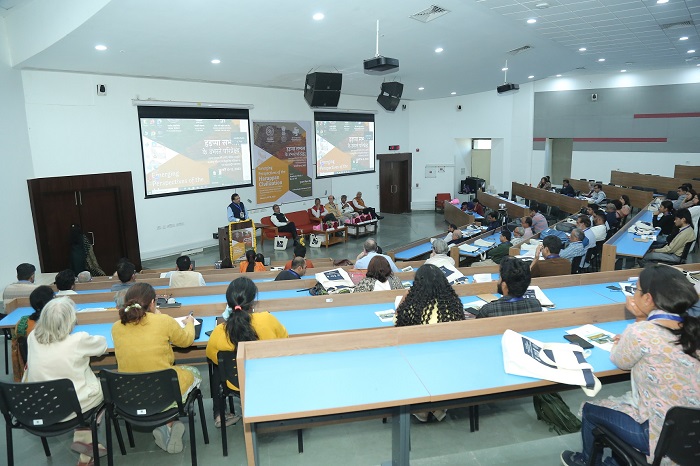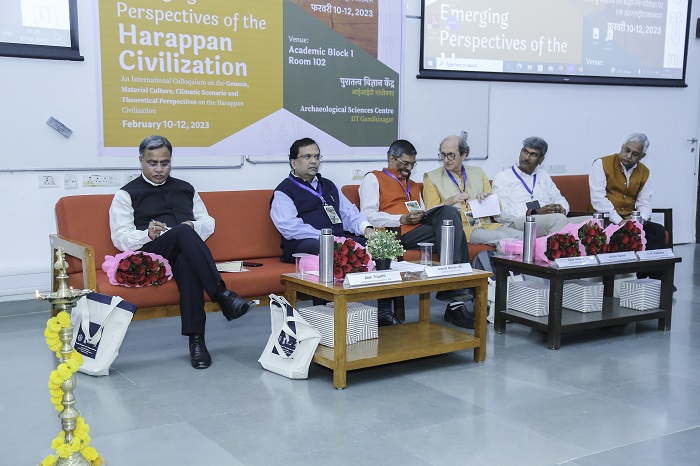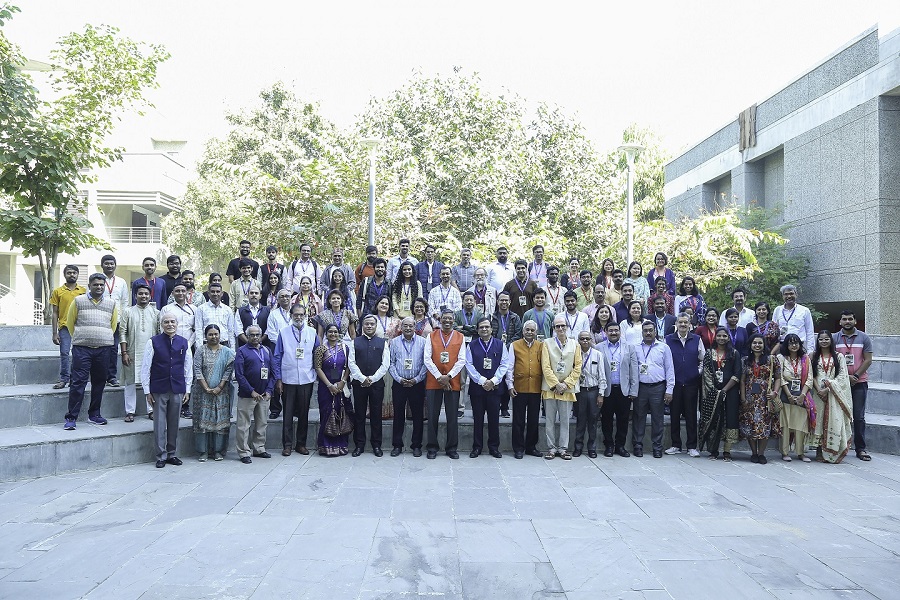STORY CREDITS
Writer/Editor: Shivangi Vasudev Bhatt
Photo: Media and Communication, IIT Gandhinagar
Apart from promoting research in various aspects of archaeology through various collaborative and scholarly activities, the resources under this Chair will also be used to deepen research in multiple facets of the ancient Harappan / Indus / Sindhu-Saraswati Civilisation. With state-of-the-art research facilities and an extraordinary pool of researchers from all over the world, it will create a stream of work to help unearth several new facets through an amalgamation of fieldwork on the ground and scientific research on the subjects.


Dr Alok Tripathi, Additional Director General, ASI, recalled the groundbreaking work by late Daya Ram Sahni, a veteran Indian archaeologist who led the discovery of the Harappan Civilisation in the 1920s, and termed this conference and Chair at IITGN as a new chapter to find out more about Indian culture, history, civilisation, and its relation with the Vedic culture. Prof Rajat Moona, Director, IITGN, expressed gratitude that the Ministry of Culture and Archaeological Survey of India have supported this conference and Chair at IITGN that will help us find answers to several unexplored facets of the Harappan Civilisation with coordination between research institutions and government organisations.
Prof Michel Danino and Prof VN Prabhakar from the Archaeological Sciences Centre of IITGN introduced participants to the work of the Centre and objectives of the Chair. Prof Sharada CV presented the vote of thanks.
As a part of the three-day International Colloquium on “Emerging Perspectives of the Harappan Civilisation”, being organised in collaboration with the Ministry of Culture and the Indira Gandhi National Centre for the Arts (IGNCA), Prof Ajithprasad, Maharaja Sayajirao University of Baroda, and an erudite scholar of archaeology, gave a keynote address on the topic “Harappan Civilisation: Perspectives from Gujarat”. He gave a broad panorama of the Harappan / Indus-Saraswati Civilisation, starting from its antecedents in different regions of the North-West of the Indian subcontinent and explained the accomplishments of this civilisation, including their technological and administrative aspects. He also discussed the possible factors in its decline, including climate change towards the end of the third millennium BCE.
During the course of the next two days, more than 50 archaeologists, scientists, and research scholars from India and abroad are going to speak and present their research on the Harappan Civilisation during different thematic sessions, including Genesis of the Harappan / Indus / Indus-Saraswati Civilisation, terminologies; State and polity during the Harappan Civilisation; Trade contacts with other regions; Technology during the Harappan Civilisation; Climate and environmental studies; Bio-archaeological perspectives (floral, faunal, and other related studies); Bio-anthropological / DNA studies and the composition of the Harappan population; The Indus script: inputs from archaeology and statistical studies; De-urbanisation processes of the Harappan Civilisation; Harappan Civilisation vs Vedic Culture: possible points of contact/transmission; among others. Another 15 research scholars will be presenting their work in posters. The colloquium will keep ample time for discussions on the way forward for future research.
This news has been covered by some of the leading Indian newspapers and media agencies. Click on the links below to read more.

